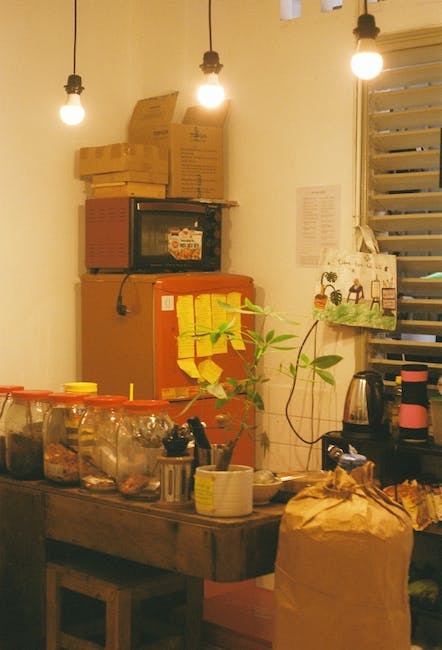Introduction to Ceylon Tea
Tea, an aromatic beverage enjoyed by people all over the world, has a rich history and cultural significance. One of the most renowned tea-growing regions is the island of Sri Lanka, formerly known as Ceylon. Ceylon tea, known for its distinctive flavor and quality, has captured the hearts of tea enthusiasts around the globe.
With its lush green hills and favorable climate, Sri Lanka provides the ideal conditions for growing tea. The island’s unique terroir, combined with the expertise of its tea growers, has contributed to the success and popularity of Ceylon tea.
In this article, we will explore the fascinating journey of Ceylon tea, from its discovery to its present-day significance. Join us as we delve into the history of this beloved beverage and uncover the reasons behind its enduring reputation.
The Discovery of Ceylon Tea
The story of Ceylon tea began in the early 19th century when the British took control of Sri Lanka from the Dutch. At the time, the island’s economy was heavily dependent on coffee plantations. However, a devastating coffee blight in the 1860s wiped out the majority of the coffee crops and left the industry in ruins.
In search of an alternative crop, the colonial government turned its attention to tea. James Taylor, a Scottish planter, is credited with introducing commercial tea cultivation to Sri Lanka. In 1867, Taylor planted the first tea bushes in the Loolecondera estate in the Kandy region.
Taylor’s efforts were met with success, and other planters soon followed suit, expanding tea cultivation across the island. The establishment of tea estates brought significant economic benefits to Sri Lanka, providing employment opportunities and helping to revitalize the struggling economy.
As the tea industry emerged, so did the demand for skilled labor. Tamil workers from India were brought in to work on the tea estates, adding diversity to Sri Lanka’s cultural landscape. Their contribution to the tea industry is recognized and celebrated to this day.
The Growth and Development of Ceylon Tea
With the increasing popularity of Ceylon tea, the industry rapidly grew and developed in the late 19th and early 20th centuries. Tea estates expanded, and production methods were refined to ensure the highest quality tea leaves.
The British played a significant role in the growth of the Ceylon tea industry. They introduced advanced machinery and production techniques, including the use of withering racks, rolling machines, and fermentation methods. These innovations improved the efficiency and quality of tea production, establishing Ceylon tea as a premium product in the global market.
The establishment of tea factories further contributed to the industry’s success. These processing facilities allowed for the sorting, grading, and packaging of tea leaves, ensuring consistency and quality in each batch. The introduction of tea auctions also provided a transparent and competitive platform for buyers and sellers to trade tea.
Ceylon tea gained a reputation for its distinct flavors, which varied depending on the region it was grown in. The high-altitude teas from Nuwara Eliya were known for their delicate and light flavors, while teas from the Uva region had robust and full-bodied profiles. These regional characteristics allowed tea enthusiasts to explore the diverse flavors and aromas Ceylon tea had to offer.
The growth of the tea industry also led to social and infrastructure developments in Sri Lanka. As more tea estates were established, roads, railways, and communication networks were developed to facilitate transportation and trade. Schools, hospitals, and other amenities were built to support the growing communities around the tea estates.

By the early 20th century, Ceylon tea had firmly established its place in the global tea market. It was highly sought after for its superior quality and distinctively refreshing taste, becoming a favorite choice for tea enthusiasts worldwide.
The Decline and Revival of Ceylon Tea
Despite the success and popularity of Ceylon tea, the industry faced several challenges and setbacks in the mid-20th century. The outbreak of World War II and the subsequent decline in global trade disrupted tea exports, causing a major setback for the Ceylon tea industry.
Furthermore, the country’s independence from British colonial rule in 1948 brought about significant changes in the agricultural landscape. Many tea estates were sold or redistributed, impacting the ownership and management of the industry.
In addition to these external factors, the rise of other tea-producing countries posed a challenge to the dominance of Ceylon tea. Competing with the likes of India, China, and Kenya, Ceylon tea had to find ways to differentiate itself to regain its position in the global market.
In response to these challenges, the Sri Lankan government implemented various initiatives to revive the tea industry. They focused on sustainable cultivation practices, improving tea quality, and promoting Ceylon tea as a premium and environmentally friendly product.
Organizations such as the Sri Lanka Tea Board were formed to regulate and promote Ceylon tea exports. They implemented strict quality control measures and established geographical indications (GI) to protect the reputation and authenticity of Ceylon tea.
These efforts paid off, and Ceylon tea gradually regained its market share. The industry saw a revival in the late 20th century, thanks to its commitment to quality, sustainability, and innovation.
Today, Ceylon tea is a thriving industry, with tea plantations covering vast areas of Sri Lanka. The country is known for producing a wide range of teas, including black, green, white, and herbal teas. The passion and dedication of the tea growers continue to ensure that Ceylon tea remains a cherished beverage for tea lovers around the world.
The Significance of Ceylon Tea in the Present Day
In the present day, Ceylon tea continues to hold immense significance in the world of tea. Renowned for its unparalleled quality and unique flavors, it has become a symbol of Sri Lanka’s rich tea heritage.
Ceylon tea is sought after by tea connoisseurs and enthusiasts who appreciate its distinctive characteristics and exceptional taste. Its versatility allows for a variety of brewing methods, whether it’s enjoying a hot cup of black tea in the morning or savoring a refreshing iced tea in the afternoon.
Furthermore, Ceylon tea has gained recognition as a healthy beverage choice. Packed with antioxidants and beneficial compounds, it offers numerous health benefits. Regular consumption of Ceylon tea has been linked to improved heart health, enhanced digestion, and increased immune system support.
Sustainability and ethical practices have also become key considerations in the tea industry. Sri Lanka’s tea plantations emphasize responsible cultivation methods, ensuring minimal impact on the environment and providing fair and equitable working conditions for its labor force.
Ceylon tea has also played a significant role in promoting tourism in Sri Lanka. Tea enthusiasts from around the world visit the country to experience the beauty of tea estates, witness the tea-making process first-hand, and immerse themselves in the scenic landscapes that encompass these plantations.
Moreover, the global popularity and demand for Ceylon tea contribute to the economic growth of Sri Lanka. The tea industry remains a vital source of income for the country, providing employment opportunities and contributing to the overall development of the nation.
In conclusion, Ceylon tea holds a special place in the hearts of tea lovers worldwide. Its journey from discovery to revival has shaped the tea industry in Sri Lanka and solidified its position as a producer of exceptional teas. With its unmatched quality, diverse flavors, and commitment to sustainability, Ceylon tea continues to captivate tea enthusiasts and leave a lasting impression on the world of tea.


Leave a Reply